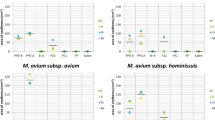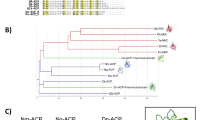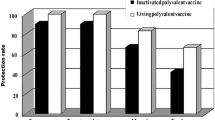Abstract
Corynebacterium pyogenes is generally grown in Robertson's medium1 when small quantities are prepared and in derivatives of this medium for vaccine production. Producing this medium for vaccines is an expensive time-consuming operation, so it was decided to investigate the possibilities of using fat-free milk as the basic medium. Strains used throughout the work were those recently isolated from bovine lesions and used at present for vaccine production.
This is a preview of subscription content, access via your institution
Access options
Subscribe to this journal
Receive 51 print issues and online access
$199.00 per year
only $3.90 per issue
Buy this article
- Purchase on Springer Link
- Instant access to full article PDF
Prices may be subject to local taxes which are calculated during checkout
Similar content being viewed by others
References
Robertson, J., J. Path. and Bact., 20, 327 (1916).
Author information
Authors and Affiliations
Rights and permissions
About this article
Cite this article
LEVY, V. New Method of preparing Corynebacterium pyogenes Toxoid with High Anti-hæmolysin Titre in Rabbits. Nature 192, 189–190 (1961). https://doi.org/10.1038/192189a0
Issue Date:
DOI: https://doi.org/10.1038/192189a0
Comments
By submitting a comment you agree to abide by our Terms and Community Guidelines. If you find something abusive or that does not comply with our terms or guidelines please flag it as inappropriate.



